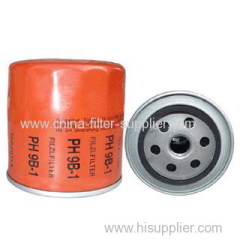
Membrane Filter/Liquid Filter 1
| Min. Order: | 5000 Piece/Pieces |
|---|---|
| Trade Term: | FOB |
| Payment Terms: | T/T |
| Supply Ability: | 10000 Piece/Pieces per Day |
| Place of Origin: | Tianjin |
Company Profile
| Location: | Tianjin, China (Mainland) |
|---|---|
| Business Type: | Manufacturer, Trading Company |
| Main Products: | Membrane Filter, Syringe Filter, Manifolds Vacuum Holder, Solvent Filter, Gm-1.00 Diaphragm Pump |
Product Detail
| Means of Transport: | Ocean, Air |
|---|---|
| Production Capacity: | 10000 Piece/Pieces per Day |
| Packing: | carton |
| Delivery Date: | Within 1-2 days after received the payment |
Product Description
The microporous membrane filter is mainly used for the filtration of mobilephase and samples during the chromatographic analysis, especially for preventingchromatographic column and infusion pump line system and sample valve frompollution. They are widely used for gravimetric analysis, microanalysis, colloidseparation and sterility test. The filer membrane made of different materials,such as polyetherdsulfone (PES), nylon6, Nylon66 MCE and polytetrafluoroethylene(PTFE), PVDF etc. can be provided.
Nylon66
High quality nylon66 membranes are suitable for filtering aqueous solutionsand most organic solvents. The membranes are suitable for use with a wide rangeof biological preparations and can be used where other membranes are unsuitableor difficult to use.
Nylon66 membranes are hydrophilic, eliminating the need for wetting agentsthat could be extracted when filtering aqueous solutions. The membranes areflexible, durable and tear resistant, and can be autoclaved at 121ºC. This kindof membrane is imported from England.
Applications
- Filtration of aqueous and organic mobile phases
- Vacuum degassing
Filtration of tissue culture media, microbiological media, buffers andsolutions
PES
Jinteng polyethersulfone (PES) membranes are hydrophilic, low protein bindingand stable in alkaline pH. Available in a 0.8µm pore size, the PES membrane isrecommended for aqueous applications and for biological samples. They are alsoan alternative choice for users requiring a filter that exhibits extremely lowprotein binding characteristics. This kind of membrane is imported from MEMBRANAcompany in Germany.
PTFE
PTFE membranes are particularly suitable for preparing samples for HPLCanalysis. The hydrophobic nature of the membrane also has applications for airand gas sterilization. The membrane is laminated onto a non-woven polypropylenesupport web for improved strength and handling and can be used at temperaturesup to 150ºC.
PTFE is the membrane of choice for use with the aggressive solvents, liquidsand gases that can attack other membranes. It is resistant to most acids,alkalis and solvents.
Applications
One of the major applications for the PTFE filter is the clarification ofcorrosives, solvents and aggressive fluids. This includes the importantrequirement in HPLC analysis for sample filtration where any solid particles cancause permanent damage to the column. The 0.45µm pore size is normally used.
Mixed Cellulose Ester (MCE)
Jinteng MCE membrane filters are modified to offer researchers the lowestbinding filters available. Due to the extremely low binding characteristics,these filters provide higher throughputs than competitive offerings and reducefilter changes when filtering proteinaceous solutions.
Because of their unique strength and extremely low binding characteristics,Jinteng MCE membranes are ideal for protein and enzyme filtrations, tissueculture media sterilization, cold sterilization, biological fluid filtration andother filtration applications where maximum recovery of proteins iscritical.
Features and Benefits:
- Lowest binding material available
- Hydrophilic
- High throughput
- Strength and dimension stability
- Uniform pore structure
Applications:
- Protein and enzyme filtration, sterilization
- Biological fluid filtration sterilization
- Tissue culture media sterilization
- Diagnostic cytology
- Receptor binding studies
- Enhanced recovery of fastidious gram positive organisms








